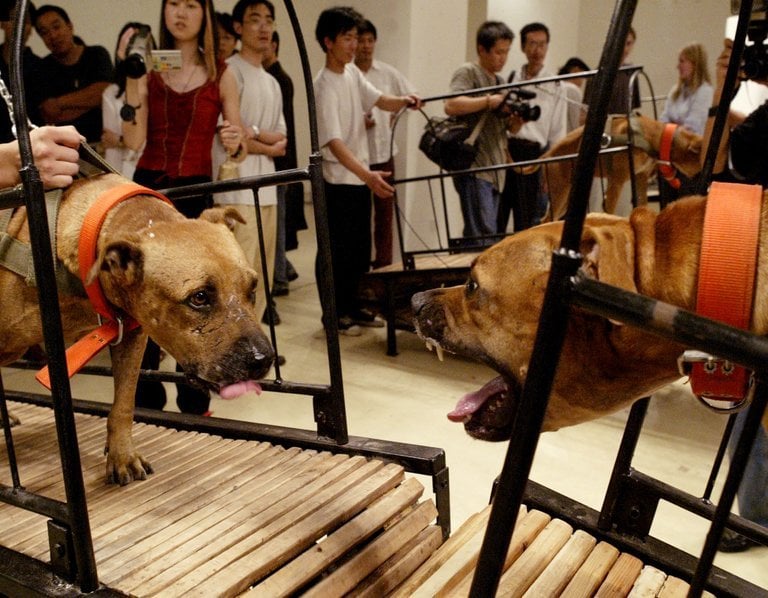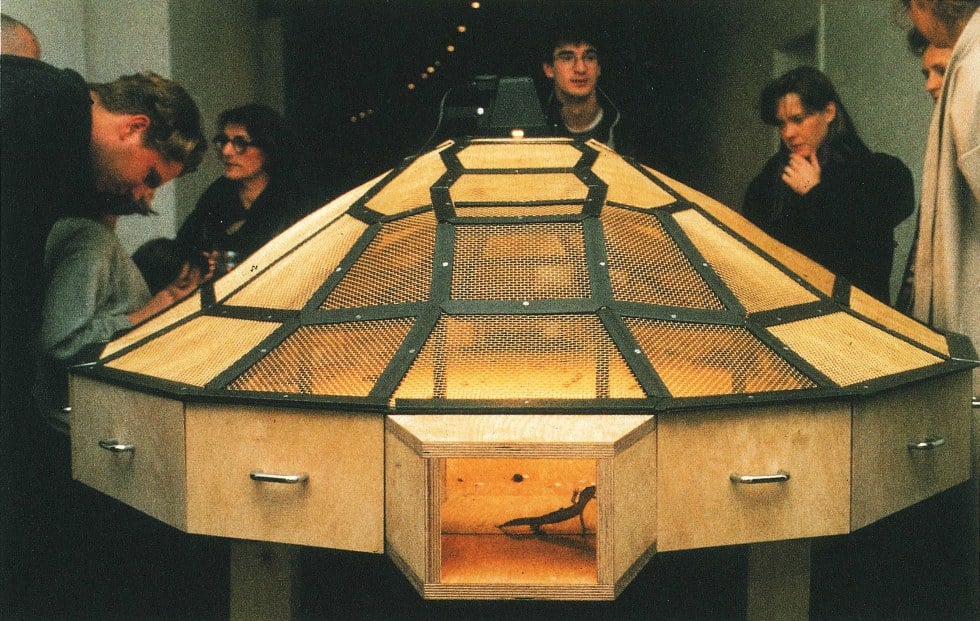More than a year after New York’s Solomon R. Guggenheim Museum withdrew three controversial artworks that featured animals from its highly anticipated survey of Chinese art, the San Francisco Museum of Modern Art is following its lead. When SFMOMA opens its own version of the traveling exhibition “Art and China after 1989: Theater of the World” on November 10, the three offending works will be shown in the same altered state in which they appeared at the Guggenheim: as empty containers or blank screens, accompanied by statements from the artists.
The wildly ambitious show charts the work of two generations of Chinese artists from 1989, the year of the Tiananmen Square protests, to 2008, when Beijing hosted the Olympic Games. But even before the exhibition opened to the public, it ignited a national debate about both animal rights and censorship. Animal rights activists’ opposition to the three works was so intense that the Guggenheim decided not to show them as planned, citing “explicit and repeated threats of violence.”
Like the Guggenheim, SFMOMA will present the exhibition’s titular work—Huang Yong Ping’s Theater of the World (1993), a cage in which insects, snakes, and lizards battle it out for survival—without the live animals. It will be presented alongside an airsickness bag on which the artist wrote a response to the Guggenheim’s decision during his flight to New York.
The California museum has also decided against showing footage from Xu Bing’s A Case Study of Transference (1994), a video in which two pigs tattooed with nonsensical English words and Chinese characters copulate in front of a live audience. (The Guggenheim acquired the work after the show closed.) Perhaps the most protested work, Sun Yuan and Peng Yu’s Dogs That Cannot Touch Each Other (2003), a video of two pit bulls trying to run at each other while tied to treadmills, will not be shown either.

Sun Yuan and Peng Yu, Dogs That Cannot Touch Each Other. Courtesy of Galleria Continua, San Gimignano, Beijing, Les Moulins, Habana.
“‘Art and China 1989: Theater of the World’ is, in many ways, an exhibition about historical exhibitions,” a spokesperson for SFMOMA told artnet News. “The public response to the three works in the United States and the corresponding artists’ statements are now part of the history of these pieces and the exhibition itself. We decided to show them as they were displayed at the Guggenheim New York for that reason and to encourage additional public conversation without taking attention away from the larger themes of this important exhibition, including globalization, social activism, and the use of art to change society.”
The exhibition is on view now at the Guggenheim Bilbao until September 23. The curators at the Basque museum opted to show two of the three offending works, and so far the show appears to have proceeded without incident. In a statement ahead of the opening, a spokeswoman for the Guggenheim Bilbao told artnet News that the museum consulted experts and recruited trained professionals to oversee the care of the reptiles in Theater of the World. But the museum opted against showing Dogs That Cannot Touch Each Other and replaced it with a 2009 video without animals by the same artists.
In an interview ahead of the exhibition, Guggenheim curator Alexandra Munroe told artnet News that the brutality in many of the works in the show was a reflection of the rapid social change taking place in China at the time. “It’s gritty and tough and brutal because that is the world these artists have lived in,” she said. “They are not just witnesses—they are the agents of so much change that happened so fast and with such mighty force all around them from the ’60s and ’70s to the 2000s that no single individual could possibly have any control over it. It was like a maelstrom.”
SFMOMA previously hosted another landmark exhibition of Chinese art, “Inside Out,” in 1999. It was the first exhibition in the US dedicated to works created since 1986 by artists from mainland China, Taiwan, and Hong Kong.
“Art and China after 1989: Theater of the World” will be on view at the San Francisco Museum of Modern Art from November 10 to February 24, 2019.










